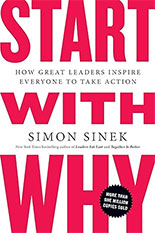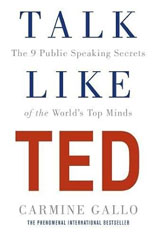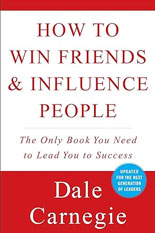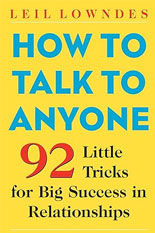In a world that thrives on constant connectivity, the ability to communicate effectively has never been more critical. Whether in our personal relationships, professional endeavors, or everyday interactions, the power of effective communication can shape our experiences and define the quality of our connections. In this post, illumy reviews it’s top 5 best books on communication. We look at books that span a spectrum of topics, from navigating difficult conversations to the fine art of small talk offering practical advice on conflict resolution, and powerful stories regarding interpersonal relationships.
“Start with Why” by Simon Sinek
 This is a thought-provoking and inspiring exploration of leadership and success, offering a fresh perspective on what sets great leaders and organizations apart. Sinek’s central thesis revolves around the concept of starting with “why” as the key to motivating individuals and fostering long-term success. Sinek, known for his TED Talks and consultation in the business world, masterfully delves into the significance of purpose-driven leadership in “Start with Why.” The book challenges conventional thinking about leadership and encourages readers to reevaluate the foundations of their actions. Sinek argues that leaders who inspire and organizations that thrive share a common trait — a clear understanding and communication of their “why,” or their core purpose and beliefs.
This is a thought-provoking and inspiring exploration of leadership and success, offering a fresh perspective on what sets great leaders and organizations apart. Sinek’s central thesis revolves around the concept of starting with “why” as the key to motivating individuals and fostering long-term success. Sinek, known for his TED Talks and consultation in the business world, masterfully delves into the significance of purpose-driven leadership in “Start with Why.” The book challenges conventional thinking about leadership and encourages readers to reevaluate the foundations of their actions. Sinek argues that leaders who inspire and organizations that thrive share a common trait — a clear understanding and communication of their “why,” or their core purpose and beliefs.
One of the strengths of the book is Sinek’s ability to support his ideas with real-world examples. He draws on a diverse range of case studies, from historical figures like Martin Luther King Jr. to contemporary success stories such as Apple, to illustrate how starting with “why” has been a common thread among those who achieve greatness. These anecdotes help bring the theoretical concepts to life, making them relatable and applicable to various contexts.
Simon Sinek introduces the “Golden Circle,” a simple yet powerful model consisting of three layers: “why,” “how,” and “what.” He argues that while most organizations start by explaining what they do, successful ones start with why they do it. This shift in perspective, he contends, not only attracts like-minded individuals but also builds lasting loyalty and engagement.
The writing style is accessible, making complex concepts digestible for a broad audience. Sinek employs a conversational tone, ensuring that even those unfamiliar with leadership theories can grasp and appreciate the significance of his message. The book is structured logically, with each chapter building on the previous one, culminating in a compelling argument for the transformative potential of understanding and communicating one’s “why.”
“Start with Why” is a compelling read for anyone interested in leadership, motivation, and the dynamics of successful organizations. Simon Sinek’s passion for his subject matter, coupled with the book’s practical approach and engaging storytelling, makes it a must-read for leaders, entrepreneurs, and individuals seeking to understand the deeper motivations behind their actions. Whether you are a seasoned executive or someone aspiring to lead, “Start with Why” provides a refreshing perspective that challenges the status quo and encourages a more purposeful approach to leadership.
“Talk Like TED: The 9 Public-Speaking Secrets of the World’s Top Minds” by Carmine Gallo
 Gallo’s book is a compelling guide that decodes the elements behind some of the most influential and memorable TED talks. Gallo distills the techniques used by successful TED speakers into nine actionable secrets, providing a valuable resource for anyone looking to enhance their public speaking skills. Here’s a review of this insightful book:
Gallo’s book is a compelling guide that decodes the elements behind some of the most influential and memorable TED talks. Gallo distills the techniques used by successful TED speakers into nine actionable secrets, providing a valuable resource for anyone looking to enhance their public speaking skills. Here’s a review of this insightful book:
“Talk Like TED” is a captivating exploration of the strategies that have made TED talks a global phenomenon. Carmine Gallo breaks down the art of public speaking into nine principles, each drawn from the best practices of renowned TED speakers. The book serves as both a practical guide and a source of inspiration for individuals seeking to improve their communication skills and deliver more impactful presentations.
One of the book’s strengths lies in its structure. Gallo organizes each chapter around a specific principle, such as “Unleash the Master Within” or “Paint a Mental Picture with Multisensory Experiences.” This systematic approach not only makes the content easily digestible but also allows readers to focus on individual aspects of their speaking style.
Gallo supports his insights with compelling examples from various TED talks, providing readers with tangible illustrations of each principle in action. By dissecting the techniques of successful speakers like Sir Ken Robinson and Brene Brown, Gallo demystifies the art of effective communication, making it accessible to a wide audience.
The book emphasizes the importance of authenticity and passion in public speaking. Gallo encourages readers to find their unique voice and to share their personal stories, as these elements are key to establishing a genuine connection with an audience. The emphasis on authenticity is a refreshing departure from traditional public speaking advice and contributes to the book’s overall relatability.
Gallo also highlights the significance of incorporating visuals, using humor, and crafting a compelling narrative to engage and captivate listeners. The inclusion of specific tips and practical exercises throughout the book ensures that readers can immediately apply the principles to their own presentations, making it a practical handbook rather than a theoretical discourse.
“Talk Like TED” is a must-read for anyone looking to elevate their public speaking abilities. The book goes beyond mere analysis, offering practical insights and actionable strategies that can be applied to various speaking engagements. By distilling the secrets of successful TED talks, Gallo empowers readers to communicate with passion, authenticity, and impact. Whether you are a seasoned speaker or someone preparing for your first presentation, “Talk Like TED” provides a valuable roadmap for transforming your communication skills and leaving a lasting impression on your audience.
“How to Win Friends and Influence People” by Dale Carnegie
 This is one of the great books that have left an indelible mark on the self-help and interpersonal communication genre. Originally published in 1936, the book’s enduring popularity is a testament to the universal principles of human interaction that Carnegie imparts. It is not just a book; it’s a guide to navigating the intricacies of human relationships with grace, empathy, and genuine interest. From the outset, Carnegie’s approachable and conversational writing style captivates readers, making the book not only insightful but also an enjoyable read.
This is one of the great books that have left an indelible mark on the self-help and interpersonal communication genre. Originally published in 1936, the book’s enduring popularity is a testament to the universal principles of human interaction that Carnegie imparts. It is not just a book; it’s a guide to navigating the intricacies of human relationships with grace, empathy, and genuine interest. From the outset, Carnegie’s approachable and conversational writing style captivates readers, making the book not only insightful but also an enjoyable read.
The book is divided into four parts, each addressing a fundamental aspect of interpersonal communication. Dale Carnegie begins by emphasizing the importance of fundamental techniques such as remembering names, showing genuine interest in others, and avoiding criticism. He then progresses to more advanced principles, including the psychology of persuasion and the ability to lead without arousing resentment.
One of the book’s key strengths lies in its practicality. Carnegie doesn’t just present theories; he provides a plethora of real-life examples and anecdotes that illustrate how individuals have successfully applied his principles. This makes the advice tangible and immediately applicable to a wide range of social and professional situations.
Carnegie’s emphasis on empathy and understanding stands out as a cornerstone of his philosophy. He encourages readers to view situations from others’ perspectives, fostering a sense of connection and goodwill. The book does not teach how to influence others through manipulation but rather about building meaningful, mutually beneficial relationships based on respect and genuine interest.
While the principles presented may seem like common sense, Carnegie’s genius lies in his ability to articulate them clearly and provide a systematic approach for their application. He reinforces the idea that people skills are essential in every facet of life, from personal relationships to professional success.
Critics of the book argue that some of Carnegie’s advice may appear simplistic or even manipulative in its endeavor to change minds. However, the true essence of the book lies in its promotion of authenticity. Carnegie advocates for sincerity in one’s interactions, debunking the notion that the book teaches mere tactics for personal gain.
The timeless classic remains an invaluable guide for anyone seeking to improve their interpersonal skills. Dale Carnegie’s principles have withstood the test of time because they are rooted in the fundamental aspects of human nature. The book is not just a manual for social success; it’s a philosophy that encourages readers to approach relationships with empathy, humility, and a genuine desire to understand and connect with others. Whether you’re a student, professional, or someone navigating the complexities of personal relationships, Carnegie’s timeless advice continues to offer valuable insights that transcend generations.
“How to Talk to Anyone” by Leil Lowndes
 This is a compelling guide to mastering the art of communication, offering practical tips and strategies for building rapport, fostering connections, and navigating social situations with confidence. Lowndes, a renowned communication expert, provides readers with a wealth of insights drawn from various fields, making this book a valuable resource for anyone looking to enhance their social skills. Here’s a review of this influential work:
This is a compelling guide to mastering the art of communication, offering practical tips and strategies for building rapport, fostering connections, and navigating social situations with confidence. Lowndes, a renowned communication expert, provides readers with a wealth of insights drawn from various fields, making this book a valuable resource for anyone looking to enhance their social skills. Here’s a review of this influential work:
“How to Talk to Anyone” stands out as a comprehensive and step-by-step guide to effective communication. The book covers a broad spectrum of scenarios, from meaningful conversations to professional networking, making it applicable to a wide range of readers. Lowndes approaches the subject matter with a combination of expertise, wit, and real-world examples, making the content engaging and relatable.
The book is divided into numerous short chapters, each focusing on a specific aspect of communication. This structure allows readers to absorb the information in bite-sized chunks and makes it easy to revisit specific tips when needed. Leil Lowndes incorporates a conversational tone that adds to the book’s accessibility, making complex concepts in communication more digestible for readers.
A notable strength of “How to Talk to Anyone” is its emphasis on practical application. Lowndes doesn’t just provide theoretical insights; she offers actionable strategies and exercises that readers can implement immediately. Whether it’s improving body language, mastering the art of small talk, or navigating social events with ease, the book equips readers with tangible skills to enhance their communication prowess.
Lowndes’ tips are grounded in psychological principles, and she often draws from research in behavioral science. This foundation lends credibility to her advice, reinforcing the notion that effective communication is not merely a collection of tricks but a skill rooted in understanding human behavior and emotions.
The book covers a wide array of topics, including building rapport, making a memorable first impression, and handling challenging social situations. Lowndes provides specific techniques for overcoming shyness, reading nonverbal cues, and adapting communication styles to different personalities, catering to readers with varying levels of social confidence.
“How to Talk to Anyone” is a valuable resource for individuals seeking to develop effective communication skills. Whether you’re an introvert looking to navigate social situations more comfortably or a professional aiming to build networking skills, Lowndes provides practical insights that can benefit readers from various walks of life. The book’s engaging style, combined with its actionable advice, makes it a go-to guide for those looking to unlock the secrets of effective communication and build meaningful connections in both personal and professional spheres.
“The 5 Love Languages: How to Express Heartfelt Commitment to Your Mate” by Gary Chapman
 This illuminating read is a transformative guide that unravels the mysteries of love and relationships by identifying and understanding the distinct ways individuals express and receive love. Chapman’s concept of the five love languages has resonated with millions, offering profound insights into fostering stronger, more fulfilling connections. Here’s a review of this influential book:
This illuminating read is a transformative guide that unravels the mysteries of love and relationships by identifying and understanding the distinct ways individuals express and receive love. Chapman’s concept of the five love languages has resonated with millions, offering profound insights into fostering stronger, more fulfilling connections. Here’s a review of this influential book:
“The 5 Love Languages” presents a simple yet profound framework that has become a cornerstone in relationship literature. Gary Chapman posits that individuals have unique preferences for how they both express and interpret love. By identifying and understanding these love languages, couples can bridge communication gaps, deepen intimacy, and strengthen the emotional bonds that sustain relationships.
The five love languages, as Chapman defines them, are Words of Affirmation, Acts of Service, Receiving Gifts, Quality Time, and Physical Touch. The brilliance of Chapman’s approach lies in its universality—applicable to couples, families, and friendships alike. He argues that understanding and speaking your partner’s primary love language can significantly enhance relationship satisfaction and longevity.
One of the book’s strengths is its accessibility. Chapman’s writing style is clear, engaging, and peppered with relatable anecdotes. The concepts are presented in a straightforward manner, making it accessible to readers of all backgrounds and levels of relationship experience. The anecdotes are particularly effective, as they provide real-world examples that readers can relate to and reflect upon.
Chapman’s emphasis on self-awareness is another key aspect of the book. He encourages readers to identify their own love languages and those of their partners, fostering a deeper understanding of personal needs and preferences. This self-discovery process is empowering, as it equips individuals with the knowledge to communicate their desires and appreciate their partner’s unique way of expressing love.
The practicality of the book sets it apart. Chapman offers actionable advice and exercises to help readers apply the love languages in their relationships. Whether it’s taking the quiz to determine one’s primary love language or implementing specific strategies to speak a partner’s love language, the book provides tangible steps for creating positive change.
“The 5 Love Languages” is a groundbreaking and influential book that has earned its place as a classic in the realm of relationship advice. Chapman’s insights have transformed the way individuals perceive and navigate love, offering a practical and empowering guide to building and sustaining meaningful connections. Whether you are in a long-term relationship, embarking on a new romance, or seeking to improve familial bonds, Chapman’s love languages provide a valuable lens through which to understand and nurture the unique dynamics of love.
Whether you’re a seasoned communicator or someone just beginning to explore the vast landscape of interpersonal skills and emotional intelligence, these 5 books will help you collaborate, and communicate in every facet of your life. Happy reading!


